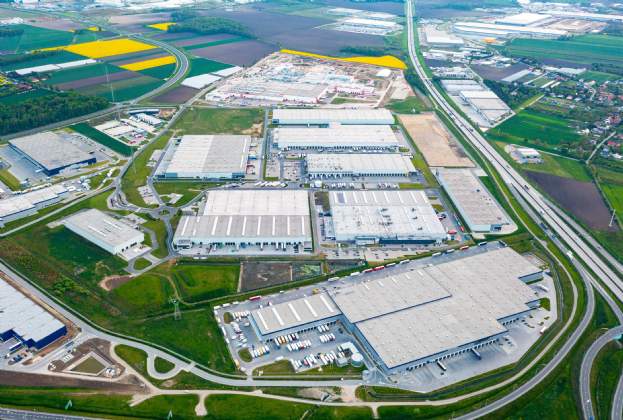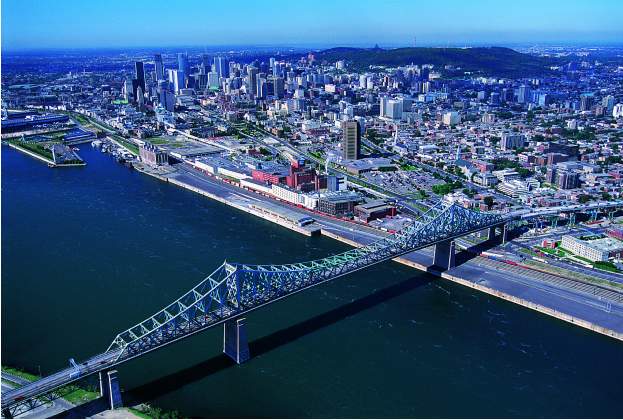Last week, from the port city of Long Beach, CA, Savills Industrial Services professionals attended NAIOP I.CON West to connect with industry leaders, experts, and enthusiasts and discover the latest trends and innovations shaping the industrial real estate landscape. Renowned industry leaders took the stage to share their perspectives on the current state of industrial real estate and where the future is headed. Topics ranged from the impact of e-commerce on warehouse design to the growing importance of sustainability in development projects.
Presenting to a packed audience during his session titled "Predicting the Path of the Supply Chain," J.C. Renshaw, head of supply chain consulting for North America at Savills, discussed the current trends placing strain on supply chains. Reflecting on the evolution from the early days of supply chains to today's complex, post-pandemic environment where "supply chain" is a common household term, Renshaw emphasized the intricate and interwoven factors at play. He highlighted the crucial role of analytics in enabling leaders to boost their adaptability, resilience, and efficiency in this challenging landscape. Here are the key takeaways from his insightful discussion:
- Current Challenges: Today's supply chain leaders are confronted with a host of pressing challenges, including labor shortages, retention difficulties, escalating costs, and the reverberations of global disruptions such as those seen in major transit routes like the Suez and Panama Canals.
- Strategic Investments: The discussion highlights the importance of strategic investments in enhancing port efficiencies and leveraging advanced transportation technologies and robotics. These investments not only yield returns on investment but also contribute to overall operational efficiency.
- Emerging Trends: Looking towards the future, Renshaw identifies key trends to monitor, including nearshoring, labor dynamics, transportation advancements, and the indispensable role of analytics. Each trend comes with its unique set of risks and opportunities, necessitating careful navigation by industry leaders.
- Technological Advancements: Technology, particularly AI, robotics and automation for material handling emerges as a critical enabler of efficiency within the supply chain. While robotics offer potential cost reductions and efficiency gains, the human element and acceptance of these technologies remain important considerations.
- Role of Third-Party Logistics (3PLs): Renshaw predicts a rising reliance on 3PLs as experts who can navigate the complexities of modern supply chains. Outsourcing analysis and leveraging 3PL systems and tools are crucial strategies for decision-makers aiming to optimize flexibility and efficiency.
- Seeking a Competitive Edge: In the competitive landscape of supply chain management, the quest for a distinct advantage remains paramount. Whether through network optimization modeling, labor optimization, transportation innovations, inventory management, or cost control measures, strategic differentiators will define success in this rapidly evolving field.
Beyond Renshaw's session, the conference provided many insights from industry leaders with panel discussions that covered topics such as sustainability in industrial development, the rise of multi-story warehouses in urban centers, and the impact of trade policies on global supply chains. For those who missed this amazing event, below is a snapshot of some key insights from the two-day conference.
- Economic Trends, Risks and the Industrial Market: During I.CON West, the keynote speaker, a managing director and chief U.S. economist with CoStar Group, conducted a poll on attendees' economic outlook, revealing a largely positive sentiment despite the lasting effects of the $4 trillion in U.S. economic stimulus and aggressive monetary policies resulting from the COVID-19 pandemic. The speaker highlighted the nation's strong GDP and consumer-driven economic growth, though concerns of a looming recession persist. Factors such as high mortgage rates and a slowdown in industrial space absorption were discussed, with industrial real estate rebalancing after a surge in demand in 2021 and 2022. The speaker predicted a rise in industrial vacancy rates to 6-7% in 2024, but also hinted at potential interest rate cuts and a hopeful recovery from pandemic impacts by 2025.
- AI and Technology in Industrial Development: The key to optimizing space in global properties lies in leveraging AI, which hinges on data analytics and machine learning. AI enables rapid, insightful decision-making, as demonstrated by a scenario where AI transformed parking layout dilemmas into thoughtful considerations of end-user needs. Starting this AI journey involves asking the right questions about tasks, data requirements and moving away from reliance on Excel sheets. The panel emphasized the importance of starting with correct, rigorously managed data for successful AI integration. They stressed the significance of data architecture, encryption, and using reputable vendors. Businesses were urged to "weaponize" their data for future success, with the assertion that embracing AI for commercial real estate decisions ensures competitiveness and growth.
- Evolving Sustainability Regulations in Industrial CRE: Navigating ESG regulations and reporting is complex yet vital for market differentiation, tenant communication, and investor appeal. A panel discussed California's AB 802, highlighting collaboration for asset performance. They also covered upcoming mandates like California's SB 253 and SEC's climate disclosure rules, emphasizing rigorous ESG reporting aligned with financial disclosures. Energy compliance drives tenant engagement, with certifications enhancing building value. ESG boosts market perception, asset resilience, tenant satisfaction, employee retention, and rental potential, echoing the mantra: "Build tight, ventilate right, energize with sunlight."
.jpg)

.jpg)
.jpg)
.jpg)
.jpg)
.jpg)
.jpg)
.jpg)
